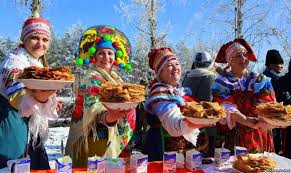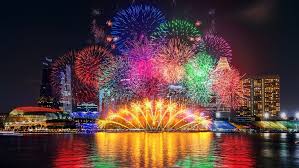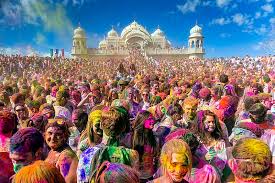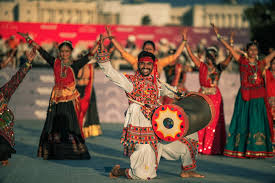Festivals are an integral part of human culture, and they reflect the unique traditions, customs, and celebrations of different societies around the world. From colorful parades to mouth-watering food, festivals create a sense of unity and joy for people of all ages. In this article, we embark on a journey through some of the most exciting and vibrant global festivals, showcasing their rich traditions, delectable foods, and unforgettable fun.
What Makes Global Festivals So Special?
Global festivals are more than just events; they are expressions of culture, history, and community. They provide opportunities to celebrate shared values, honor heritage, and connect with people from diverse backgrounds. These celebrations often have deep-rooted traditions, showcasing music, dance, art, and rituals that have been passed down for generations.
Festivals unite people from different walks of life and offer a sense of belonging and happiness. They also offer a window into the heart of a culture, allowing travelers to experience a country’s traditions, cuisine, and people in the most authentic way.
The Role of Traditions in Global Festivals
Each festival around the world has its own set of traditions and customs, which give it its unique character and significance. These traditions often stem from religious beliefs, seasonal changes, historical events, or cultural stories. Let’s take a look at how traditions play a role in global festivals:
- Carnival (Brazil): Carnival in Brazil is one of the world’s largest and most famous festivals. This event is rich in tradition, with its roots in Christian pre-Lenten celebrations. The vibrant parades, samba music, and extravagant costumes are a highlight, but the festival is also a celebration of Afro-Brazilian culture and spirituality.
- Diwali (India): Diwali, the Festival of Lights, is celebrated by millions in India and around the world. The festival symbolizes the victory of light over darkness and good over evil. Families decorate their homes with oil lamps (diyas), exchange gifts, and enjoy traditional sweets like ladoos and barfis.
- Oktoberfest (Germany): Oktoberfest is not only a beer festival but also a cultural tradition that traces back to 1810. The event celebrates Bavarian culture with traditional folk music, lively dances, and, of course, beer. The iconic beer tents, hearty German food, and elaborate costumes make this festival a must-visit.
- Chinese New Year (China and worldwide): Chinese New Year, also known as the Spring Festival, is steeped in tradition. It marks the beginning of the lunar new year and is a time for family reunions, honoring ancestors, and enjoying festive meals. Traditional practices include giving red envelopes (hongbao), dragon dances, and firework displays.
A Feast for the Senses: Food at Global Festivals
One of the most exciting aspects of festivals around the world is the food. Each celebration brings its own unique culinary delights, offering a chance to indulge in flavors, spices, and dishes that define each culture. Here are some of the best festival foods to try:
- Tacos (Mexico – Día de los Muertos): Day of the Dead (Día de los Muertos) is a Mexican festival that honors deceased loved ones. Families create altars with offerings like sugar skulls and marigolds, and one of the most beloved foods during this time is tacos—especially those filled with rich, slow-cooked meats and fresh salsa.
- Paella (Spain – La Tomatina): Paella is a Spanish dish that originates from the region of Valencia. During La Tomatina, Spain’s famous tomato-throwing festival, participants often enjoy large family meals with a hearty serving of paella, a flavorful rice dish cooked with seafood, meats, and vegetables.
- Poffertjes (Netherlands – King’s Day): During King’s Day, the Netherlands celebrates the birthday of the king with music, dancing, and a carnival-like atmosphere. The traditional food at this festival is poffertjes, which are small, fluffy pancakes served with powdered sugar and butter.
- Churros (Spain and Latin America – Various Festivals): Churros are enjoyed at many festivals across Spain and Latin America. These sweet, fried dough pastries are often dipped in hot chocolate or sprinkled with cinnamon sugar, making them a popular treat during celebrations such as Easter, Christmas, and national holidays.
- Sushi (Japan – New Year’s Festival): In Japan, New Year’s celebrations are marked by traditional foods like osechi-ryori, a special New Year’s bento box. However, sushi is often served at New Year’s festivals and celebrations, showcasing Japan’s rich culinary traditions.
Fun and Entertainment at Festivals
Festivals are not just about food and tradition—they are also about fun, entertainment, and creating lasting memories. Whether it’s dancing in the streets, watching parades, or attending concerts, the joy of a festival often comes from the sense of community and shared experience. Some examples of fun activities at global festivals include:
- Music and Dance (Brazil – Carnival): The streets of Rio de Janeiro come alive during Carnival, where samba dancers in elaborate costumes perform in parades. The rhythmic beats of drums and lively music invite everyone to join in the fun.
- Fireworks Displays (China – Chinese New Year): Fireworks are a major part of Chinese New Year celebrations. The skies light up with spectacular displays, symbolizing the driving away of evil spirits and ushering in good luck for the coming year.
- Games and Competitions (Spain – Running of the Bulls): In Pamplona, Spain, the Running of the Bulls is a centuries-old tradition that takes place during the San Fermín Festival. Brave participants race alongside the bulls through the narrow streets, adding an element of excitement and thrill to the event.
- Parades and Processions (India – Diwali): During Diwali, grand parades take place in cities across India. Devotees light up fireworks, decorate temples and homes, and participate in processions that celebrate the victory of good over evil.
Why Global Festivals Are Worth Celebrating
Festivals are a reflection of the cultural richness, history, and values of societies around the world. They offer a chance to experience the diversity of our global community and promote understanding and unity. By participating in these celebrations, whether near or far, we can appreciate the uniqueness of different traditions while finding common ground in shared joy, food, and fun.
Conclusion: A World of Traditions, Food, and Fun
Whether you’re exploring the colorful celebrations of Brazil’s Carnival, tasting the rich flavors of Mexican cuisine during Día de los Muertos, or enjoying a vibrant parade in India for Diwali, global festivals offer an unforgettable journey of discovery. They bring people together, celebrate the diversity of cultures, and remind us of the simple pleasures in life: traditions, food, and fun.
As we continue to embrace the global tapestry of celebrations, let us appreciate the power of festivals in uniting us and making our world a more joyful place. From the lively streets of Spain to the spiritual celebrations of India, festivals remind us that the world is a beautiful, diverse place worth celebrating.
Keywords: global festivals, cultural festivals, world celebrations, traditional festivals, festival foods, Carnival Brazil, Diwali India, Chinese New Year, Oktoberfest, La Tomatina, festival traditions, food and festivals, traditional dishes, music and dance, festival parades, fun at festivals, holiday celebrations, cultural heritage, multicultural events, international festivals, community celebrations, festival experiences, food culture, unique festivals, global cuisine, festive atmosphere, festival joy, colorful celebrations, traditional celebrations, festival tourism.





